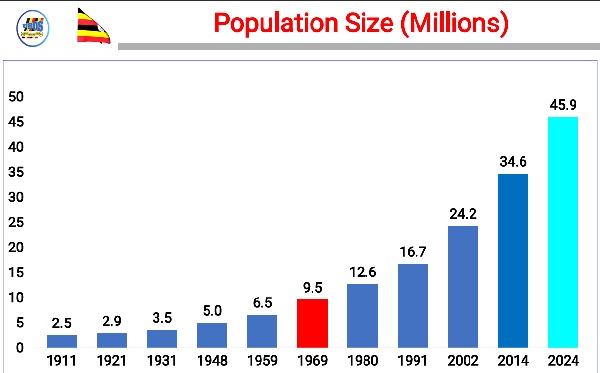
Kampala, Uganda | THE INDEPENDENT & URN | Uganda’s population has increased by 11.3 million in 10 years. It has jumped to 45.9 million from 34.6 million in 2014. Enumeration was done May 10th to May 26th.
This was revealed Thursday by Chris Ndatira Mukiza, Executive Director of The Uganda Bureau of Statistics (UBOS) in a presentation of preliminary results at Kampala Serena Hotel today.
The dissemination of the National Population and Housing Census 2024 preliminary results were officially launched by President Yoweri Kaguta Museveni.
The report indicates that at birth demographically, there are more males born than baby girls. It is estimated that there are 105 males born daily, but more males later die due to biological social and environmental issues.
This was the 11th census in Uganda, the 6th post independence census and the 1st digital census.
- Gender
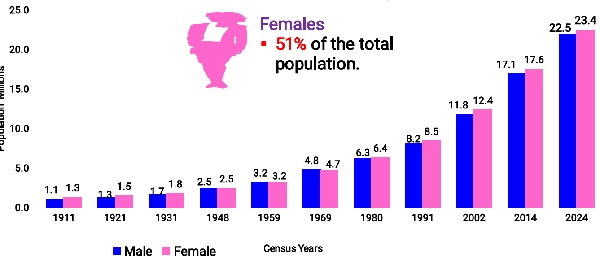
- Households
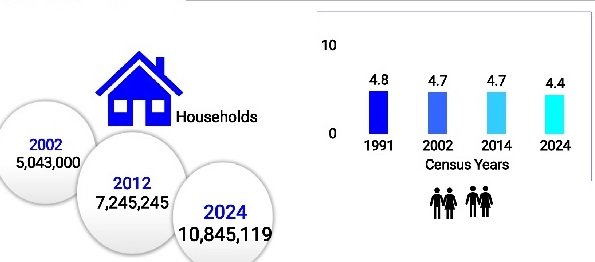
The results mean that the country’s population growth rate has declined to 2.9 percent, lower than the 3.1 percent previously recorded. The results also show that the country hosts up to 780,062 refugees.
The figures also indicate 10,845,119 households, up from the 2012 estimate of 7.2 million.
The average household size has also reduced from 4.7 members to 4.4 members, indicating that Ugandan families are decreasing in size. Of this population, 4,276,228 people reside within the 11 cities in the country, while 1,271,417 are visiting.
The age groupings show that half of the Ugandans are between 0 to 17 years old, and those between 18 to 30 are 22.7 percent of the population. For productivity, the results show that the country’s working population, aged 14 to 64 years, stands at 55.6 percent, while those above 65 years constitute only 5.0 percent of the population.
Speaking at the launch of the results, President Yoweri Museveni commended the Uganda Bureau of Statistics (UBOS) for completing the census, which he said is a guide to the country’s development programs.
Museveni noted that the results confirm that Uganda has entered lower-middle-income status
The president said he was surprised about the outcome of the population numbers because his expectation was a number between 48 to 50 million people, an estimation he initially based on to announce Uganda’s attainment of lower-middle-income status.
- Growth rates
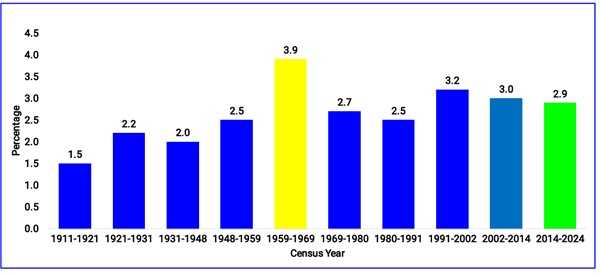
- Age Groups
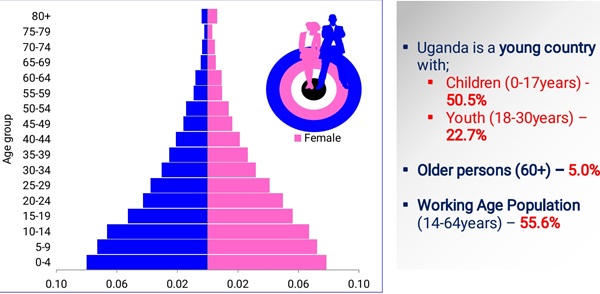
Chris Mukiza, the UBOS Executive Director, said that the census results have been released exactly 31 days after the closure of the enumeration exercise, which is commendable. He added that the data quality has been assessed against international standards and it has ranked higher compared to what was collected in 2014, making it more reliable and less likely to be contested.
According to Mukiza, the exercise was carried out at a cheaper cost compared to its regional neighbors. “The cost to enumerate one person was USD 1.9, compared to USD 2.1 spent in Kenya, and I suspect it is also cheaper than that of Tanzania,” he stated.
The census questionnaire, which had over 160 questions, provided a lot of data. Mukiza singled out the mental health status of the country, acknowledging that the numbers reflect that the Ministry of Health and other health sector players will have a lot of work to do, as there are many Ugandans in need of mental health support.
The results are from Uganda’s 11th population census since 1911, the 6th post-independence, and the first ever to be digitally conducted. UBOS says it will be releasing results in bits, and by September, the final results will be out.
The results, show Uganda’s demographic landscape and allow the country to effectively navigate its development path, as these findings will be crucial in policy design, and enhancement of targeted programs to address the needs of its diverse and growing population.
- Cities
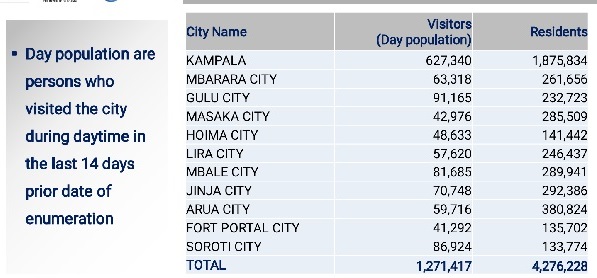
Regions
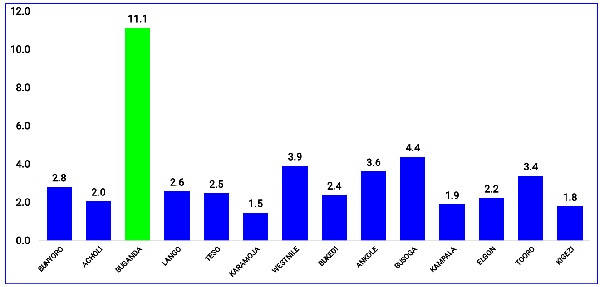
 The Independent Uganda: You get the Truth we Pay the Price
The Independent Uganda: You get the Truth we Pay the Price



